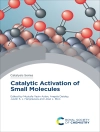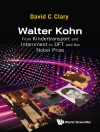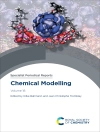Metrological traceability of chemical measurement results means the establishment of a relation to metrological stated references through an unbroken chain of comparisons. This volume collects 56 outstanding papers on the topic, mostly published in the period 2000-2003 in the journal ‘Accreditation and Quality Assurance’. They provide the latest understanding, and possibly the rationale why it is important to integrate the concept of metrological traceability including suitable measurement standards such as certified reference materials, into the standard measurement procedures of every analytical laboratory. In addition, this anthology considers the benefits to both the analytical laboratory and the user of the measurement results.
Table des matières
Measurement principles for traceability in chemical analysis.- Protocols for traceability in chemical analysis.- Protocols for traceability in chemical analysis.- Metrological traceability in laboratory medicine.- Traceability and analytical chemistry.- Do interlaboratory comparisons provide traceability?.- From total allowable error via metrological traceability to uncertainty of measurement of the unbiased result.- Practical considerations on the traceability to conventional scales.- Traceability of (values carried by) reference materials.- What can we learn from traceability in physical measurements?.- How to achieve international comparability for chemical measurements.- The key elements of traceability in chemical measurement: agreed or still under debate?.- The practical realization of the traceability of chemical measurements standards.- Link to the SI via primary direct methods.- The role of reference materials.- The measurement assurance concept in calibration and traceability at NBS/NIST.- Lifetime of the traceability chain in chemical measurement.- Proficiency evaluation as a traceability link in chemical metrology.- Achieving traceability in chemical measurement — a metrological approach to proficiency testing.- Traceability issues in measurement.- Comparative study of the presentations at the CCQM workshop on traceability.- Traceability in laboratory medicine.- Testing for foods derived from modern biotechnology: opportunities and limitations for metrology.- A national traceability system for chemical measurements.- Establishing measurement traceability in clinical chemistry.- Clinical Laboratory Reference Networks.- One way of disseminating reference values with demonstrated traceability and demonstrated uncertainty to field laboratories: IMEP.-Implementation of traceability — needs and perspective of the in-vitro-diagnosticum industry.- Improvements in efficiency of production and traceability for certification of reference materials.- Traceable measurements in clinical laboratories.- A traceability protocol to the SI by gravimetric analysis.- Reference samples for analysis of gas impurities in aluminium and titanium alloys: Features of production, certification and usage to ensure traceability of results.- The use of certified reference materials in the Romanian traceability scheme.- Traceable measurements of p H.- The development of gas standards and calibration techniques for measurements of vehicle, aircraft and industrial emissions, natural gas, occupational exposure and air quality.- Problems of traceability of total protein and catecholamine determinations in human urine.- Traceability in routine chemical measurements: an example of application in the determination of CO2 at atmospheric concentration.- Traceability of measurement results of the effective acquisition time in gamma-ray spectrometry implemented by the pulser method.- Practical ways in establishing traceability in chemical and other measurements in Mexico.- Benefits of the implementation of a metrological structure for water analyses.- Validation steps for traceability of linear calibrated chemical measurements.- Traceability, is it what we really want in our chemical measurements?.- Traceability in measurement — time for an update?.- On the existence of primary methods of measurement.- Traceability and uncertainty — A comparison of their application in chemical and physical measurement.- Traceability and its role in interlaboratory comparisons (proficiency testing programmes), modeled on trace element determination in biologicalmaterials.- Traceable property values of in-house reference materials.- Primary reference materials and traceability chain for gas composition.- Traceability to units.- Traceability without uncertainty: current situation in the pharmaceutical industry.- The role of reference materials in analytical chemistry.- Meeting ISO/IEC 17025 Traceability Requirements.- UK delivery of traceable chemical measurements in the 21st century: building on the foundation of the VAM programme.- Disseminating traceability in chemical measurement: Principles of a new EURACHEM/CITAC guide.- CITAC Position Paper: Traceability in chemical measurement.- Glossary of analytical terms.












